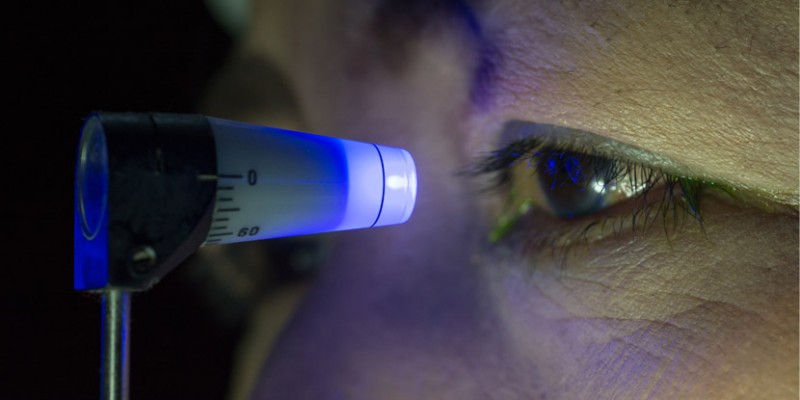
Glaucoma is a complex eye condition characterized by progressive damage to the optic nerve, often leading to irreversible vision loss if left untreated. It earned its moniker as the "silent thief of sight" because it typically advances stealthily, often without noticeable symptoms until significant damage has occurred. This makes regular eye exams crucial for early detection and intervention.
Decoding Glaucoma: Causes and Symptoms
The primary cause of glaucoma is elevated intraocular pressure (IOP), which can damage the optic nerve over time. However, not all individuals with elevated IOP develop glaucoma, and some with normal IOP can still experience optic nerve damage. Other risk factors include age, family history, ethnicity, and certain medical conditions like diabetes.
Symptoms of glaucoma can vary depending on the type and stage of the condition. In its early stages, glaucoma may not present any noticeable symptoms, making regular eye exams essential for early detection. As the condition progresses, symptoms may include peripheral vision loss, blurred vision, halos around lights, eye pain, and nausea or vomiting.
Exploring the Mechanisms of Glaucoma
To understand glaucoma, it's essential to grasp its underlying mechanisms. In the most common form, primary open-angle glaucoma, the drainage angle of the eye becomes partially blocked, leading to a gradual increase in IOP. This elevated pressure can damage the optic nerve, resulting in vision loss.
In angle-closure glaucoma, the drainage angle becomes completely blocked, causing a sudden increase in IOP and triggering acute symptoms such as severe eye pain, headache, nausea, and blurred vision. This is considered a medical emergency requiring immediate treatment to prevent permanent vision loss.
Types of Glaucoma: From Open-Angle to Angle-Closure
Glaucoma encompasses several subtypes, each with its own distinct characteristics and treatment approaches. Primary open-angle glaucoma is the most common form, typically progressing slowly over time. Angle-closure glaucoma, on the other hand, can develop suddenly and require urgent medical attention.
Other variants include normal-tension glaucoma, where optic nerve damage occurs despite normal IOP, and secondary glaucoma, which develops as a result of underlying conditions such as eye trauma, inflammation, or tumors.
Risk Factors: Who's at a Higher Risk of Developing Glaucoma?
While anyone can develop glaucoma, certain factors increase the likelihood of its occurrence. Advancing age is a significant risk factor, with individuals over 60 at greater risk. Additionally, individuals with a family history of glaucoma, African Americans, Hispanics, and Asians are more predisposed to the condition. Other risk factors include high intraocular pressure, thin corneas, and certain medical conditions such as diabetes and hypertension.
The Importance of Early Detection and Treatment
Early detection is paramount in managing glaucoma and preventing irreversible vision loss. Since the condition often progresses silently, routine eye exams are essential for detecting signs of glaucoma before significant damage occurs. During these exams, eye care professionals may perform various tests, including tonometry to measure intraocular pressure, visual field testing to assess peripheral vision, and optic nerve imaging to evaluate nerve damage.
If diagnosed with glaucoma, timely treatment can help slow or halt the progression of the disease. Treatment options may include prescription eye drops to reduce intraocular pressure, oral medications, laser therapy, or surgical procedures to improve drainage and reduce pressure within the eye.
Preventing Vision Loss: Strategies for Managing Glaucoma
In addition to medical interventions, lifestyle modifications can play a role in managing glaucoma and preserving vision. These may include maintaining a healthy diet rich in antioxidants and omega-3 fatty acids, engaging in regular exercise, avoiding tobacco smoke, and managing underlying health conditions such as diabetes and hypertension. Additionally, protecting the eyes from injury and minimizing stress can help reduce the risk of exacerbating glaucoma symptoms.
Living with Glaucoma: Navigating Daily Life
Living with glaucoma can present challenges, but with proper management and support, individuals can lead fulfilling lives. It's essential for patients to adhere to their treatment regimens, attend regular follow-up appointments with their eye care providers, and communicate any changes in their vision or symptoms promptly. Support groups and educational resources can also provide valuable information and emotional support for those living with glaucoma and their families.
Innovations in Glaucoma Treatment: Beyond Traditional Therapies
Advancements in technology and medical research continue to drive innovation in glaucoma treatment. From minimally invasive surgical techniques to implantable devices and sustained-release drug delivery systems, researchers are exploring new avenues to improve patient outcomes and quality of life. These innovations aim to enhance treatment efficacy, minimize side effects, and offer new options for individuals with glaucoma.
Seeking Support: Resources for Glaucoma Patients
For individuals living with glaucoma, accessing reliable information and support networks can make a significant difference in their journey. Organizations such as the Glaucoma Research Foundation, the American Academy of Ophthalmology, and local support groups offer resources, educational materials, and opportunities for community engagement. These platforms can empower patients to become proactive advocates for their eye health and connect with others facing similar challenges.
In conclusion, glaucoma poses a significant threat to vision health, but with early detection, timely intervention, and ongoing management, individuals can effectively manage the condition and preserve their sight. By raising awareness, promoting regular eye exams, and fostering collaboration between patients, healthcare providers, and researchers, we can work together to combat the silent thief of sight and improve outcomes for those affected by glaucoma.
Pay Attention to Burning Sensation in the Stomach and Chest, Else Discomfort May Increase
Women Should Definitely Follow These Personal Hygiene Tips
Make Sure to Consume These 5 Things Even on an Empty Stomach, Otherwise, Heavy Loss May Occur